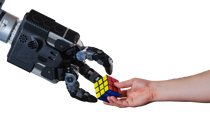Is robot-human integration set to get much deeper?

We met the United Robotics Group at VivaTech 2024 in Paris. They showed us how their new robots were skilled at robot-human integration. Will we see much more robot use in the next few years?
Robot-human integration is poised to enter a new era of sophistication and ubiquity, driven by rapid advancements in robotics technology. At VivaTech 2024 in Paris, the United Robotics Group showcased a new generation of robots designed to seamlessly blend into human environments and workflows. These robots are not only adept at performing a variety of tasks but also possess advanced interaction capabilities, allowing them to understand and respond to human emotions and commands with unprecedented accuracy. This marks a significant leap forward from previous iterations, where robots were primarily confined to repetitive, isolated tasks.
The implications of these advancements are far-reaching. In the next few years, we can expect robots to become integral parts of many industries, from healthcare and logistics to customer service and domestic chores. The United Robotics Group’s innovations demonstrate how robots can assist in medical settings by providing companionship and assistance to patients, enhance efficiency in warehouses by working alongside human employees, and even support household activities. The ability of these robots to learn and adapt to their environments means they will continually improve their interactions and effectiveness, making them invaluable assets in various sectors.
As robot-human integration deepens, ethical and societal considerations will become increasingly important. Issues such as job displacement, data privacy, and the need for new regulatory frameworks will need to be addressed. However, the potential benefits—enhanced productivity, improved quality of life, and the ability to tackle complex challenges—are immense. The vision presented at VivaTech 2024 suggests a future where robots and humans coexist and collaborate more closely than ever, ushering in an era of innovation and efficiency that could redefine the way we live and work.



